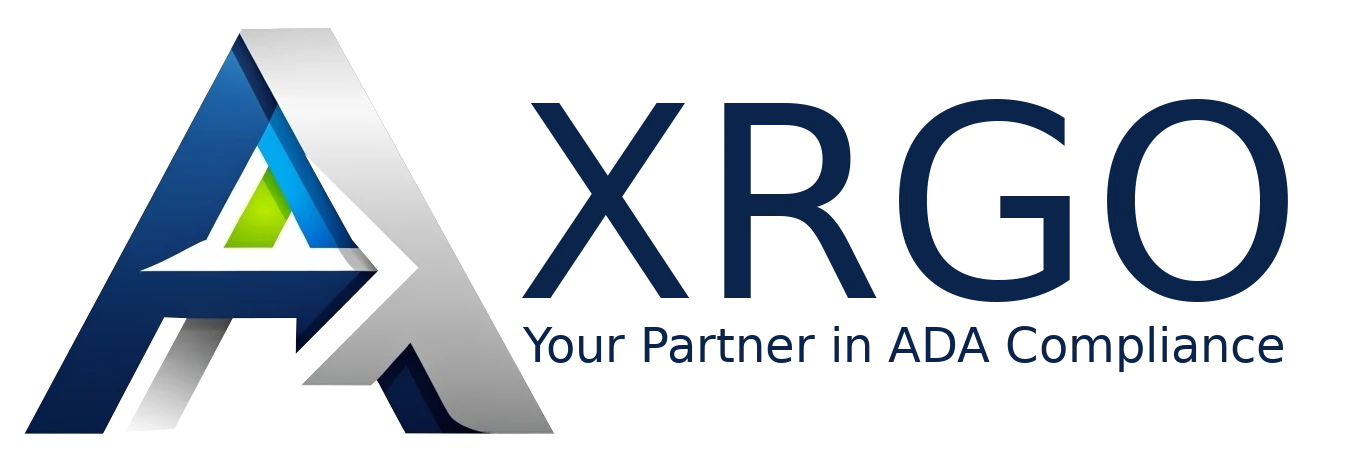Table of Contents
- Understanding Competitor Blind Spots
- Step 1: SEO Recon — Know Their Terrain Before You Attack
- Step 2: ADA Advantage — Win Audiences They Ignore
- Step 3: Speed Blitz — Load Time as a Weapon
- Step 4: Content Sniping — Win Zip Code by Zip Code
- Step 5: Exploit OEM Template Inertia
- Step 6: Own the Data, Don’t Rent It
- Key Move: Outperform Technically = Outflank Strategically
Learn how to exploit competitor blind spots in the U.S. dealership market. From slow sites to outdated SEO, most dealers leave digital openings wide open. This 2,000-word guide shows how to outflank competitors through SEO recon, ADA compliance, speed optimization, and hyperlocal content tactics.
Why Most Dealerships Are Leaving Digital Opportunities Wide Open so How You Can Take Them?
For decades, car dealerships have competed using the same predictable playbook:
- Run OEM-approved ads.
- Keep the same templated website everyone else has.
- Rely on AutoTrader or Cars.com to bring in leads.
- Hope someone drives onto the lot.
But the digital battlefield has changed. Buyers now spend more than 70% of their car shopping journey online before they ever step foot in a showroom. And while many dealerships have invested in websites, most haven’t actually turned those sites into competitive weapons.
This is where blind spots appear and if you know how to look for them, you can use your competitors’ weaknesses to your advantage.
Understanding Competitor Blind Spots
Every dealership has them. Even the largest franchise operations with million-dollar budgets fall into the trap of neglecting key areas because they rely too heavily on standard OEM solutions. Here are the most common:
Generic Inventory Pages
Most dealerships copy inventory descriptions directly from the OEM or their DMS feed. This means hundreds of websites across the country have the exact same wording, same structure, and same content. From Google’s perspective, that’s duplicate content, which gets de-prioritized in search results.Opportunity: If you create unique, SEO-optimized descriptions, localized landing pages, and well-structured metadata, your pages can outrank bigger competitors who simply recycle content.
Slow Load Speeds
Many dealer websites are overloaded with scripts, plugins, trackers, and poorly optimized media. A page that takes 4–6 seconds to load is not just annoying, it kills conversion rates and SEO rankings.Opportunity: A dealership with a lightning-fast website can dominate in organic search, improve lead conversion rates, and impress mobile users, who make up the majority of traffic.
No ADA Compliance
A shocking number of dealership websites are not ADA-compliant. This means people with disabilities can’t fully use their sites and dealerships are leaving themselves vulnerable to lawsuits, missed sales, and penalties.Opportunity: By ensuring your website is fully ADA compliant, you can reach underserved audiences, gain positive press, and even use accessibility as a competitive marketing angle (“Everyone can shop here”).
Outdated SEO Practices
Some dealerships still treat SEO like it’s 2010: stuffing keywords into footers, ignoring structured data, and failing to build topical authority.Opportunity: If you invest in modern SEO schema markup, internal linking, topical clusters, local SEO landing pages, you can capture traffic they don’t even realize they’re losing.
Overdependence on Third-Party Marketplaces
Relying too heavily on AutoTrader, Cars.com, or Facebook Marketplace means dealerships are renting traffic, not owning it. They’re at the mercy of algorithm changes and rising listing costs.Opportunity: By owning your organic search visibility, content strategy, and customer data, you become less dependent on third parties and competitors who cling to them are vulnerable.
Step 1: SEO Recon — Know Their Terrain Before You Attack
Before you make your move, you need intel.
Run Lighthouse audits, Ahrefs, or SEMrush on your competitors’ sites. What keywords are they ranking for? Where are they weak? Which pages are slow?
This is your recon mission. You’re mapping their digital terrain so you know exactly where to attack.
For example:
- If their inventory pages have poor metadata, build structured, keyword-rich inventory pages.
- If their blog hasn’t been updated in 18 months, publish fresh localized content every week.
- If their Core Web Vitals are weak, double down on performance optimization.
Tactical Tip: Track their top 50 organic keywords and local map pack rankings. If they’re slipping, that’s your opening.
Step 2: ADA Advantage — Win Audiences They Ignore
Accessibility isn’t just about legal compliance; it’s about market expansion. Roughly 26% of U.S. adults live with a disability, and many dealership websites simply don’t serve them well. That’s a massive overlooked audience.
By making your site ADA-compliant ... proper color contrast, alt text, keyboard navigation, ARIA labels, voice search optimization, you open your digital doors wider than your competitors.
Then, market it. Add a tagline like:
“Everyone can shop here — fully accessible car buying.”
This not only signals inclusion but can also give you a PR and SEO edge (Google rewards accessible websites in certain ways, particularly around usability metrics).
Step 3: Speed Blitz — Load Time as a Weapon
Speed is not optional anymore. Google’s ranking algorithm uses Core Web Vitals which measure page load speed, interactivity, and layout stability. A slow site doesn’t just rank lower; it converts worse.
Here’s what a Speed Blitz looks like:
- Use Django or a modern framework to serve pages with minimal bloat.
- Cache aggressively with Django caching and edge CDNs like Cloudflare.
- Compress images, defer non-essential scripts, and lazy-load media.
- Remove unnecessary plugins and third-party scripts.
When your competitor’s site takes 5 seconds to load, and yours takes 0.9, you’ve already won the attention battle. In a mobile-first world, milliseconds matter.
Step 4: Content Sniping — Win Zip Code by Zip Code
Many dealerships rely on one-size-fits-all content. They rarely localize pages down to the neighborhood or zip code level. That’s a blind spot you can exploit.
For example:
If your competitor is in Dallas and serves several suburbs but has only one generic “DFW” landing page, you can create dozens of hyperlocal landing pages, one for each suburb or zip code.
- Write blog posts like “Best Used Trucks in Plano, TX” or “Top Dealership for SUVs in Frisco, TX.”
- Add embedded maps, localized metadata, and community references.
- Optimize for long-tail local keywords your competitors ignore.
Content sniping lets you sneak into their backyard and outrank them where their customers live. Over time, this builds a digital moat around your territory.
Step 5: Exploit OEM Template Inertia
Many franchise dealers are locked into OEM-provided website templates. While convenient, these templates are rigid, bloated, and slow to adapt. A dealership that breaks free or builds agile microsites gains a tactical edge.
For example:
While your competitor waits three months for corporate to approve a new banner layout, you can spin up a new landing page overnight.
These guerrilla microsites can target specific promotions, audiences, or campaigns, while the main OEM site remains static. It’s classic flanking maneuver, you’re not attacking their main site head-on; you’re slipping around it.
Step 6: Own the Data, Don’t Rent It
When dealerships rely on third-party marketplaces, they don’t control the user experience, the SEO equity, or the customer data. They’re essentially paying for traffic they could have built themselves.
By focusing on your website’s performance, SEO, accessibility, and content, you own the pipeline. You can retarget visitors, segment leads, and personalize follow-ups. Your competitors? They’re stuck refreshing their Cars.com dashboard.
Key Move: Outperform Technically = Outflank Strategically
This isn’t just about “better marketing.” It’s about using technical superiority, speed, SEO precision, accessibility, content strategy to outmaneuver larger competitors.
When your website runs circles around theirs, when your content dominates local SERPs, when your ADA compliance gives you access to audiences they’ve ignored … you’re not competing on their terms anymore. You’re dictating the battlefield.
Most dealerships have glaring blind spots because they treat their digital presence like a checkbox, not a weapon.
But with the right strategy, you can exploit those gaps to outcompete bigger, slower, less adaptable rivals.
- Do the recon.
- Build accessibility into your core.
- Blitz their slow sites with speed.
- Snipe their zip codes with localized content.
- Exploit their OEM rigidity.
- Own your traffic and data.
When they’re stuck in outdated templates and marketplaces, you’ll be quietly stealing their leads, one click at a time.
Frequently Asked Questions
A blind spot is an area competitors neglect — such as ADA compliance, site speed, or localized content — that can be exploited to gain a strategic edge.
Most dealer sites are not accessible. By making yours ADA compliant, you not only reduce legal risk but also reach untapped audiences and improve usability for everyone.
Google prioritizes fast-loading sites. A faster site means better rankings, lower bounce rates, and higher lead conversions — especially on mobile.
Third-party marketplaces control traffic, data, and visibility. If their algorithms change or costs rise, dealerships have little leverage. Owning your website traffic gives you independence.
By focusing on agility — fast sites, targeted content, modern SEO, and accessibility — smaller dealerships can exploit weaknesses in larger competitors’ slower, template-driven strategies.



Comments
Log in to add a comment.